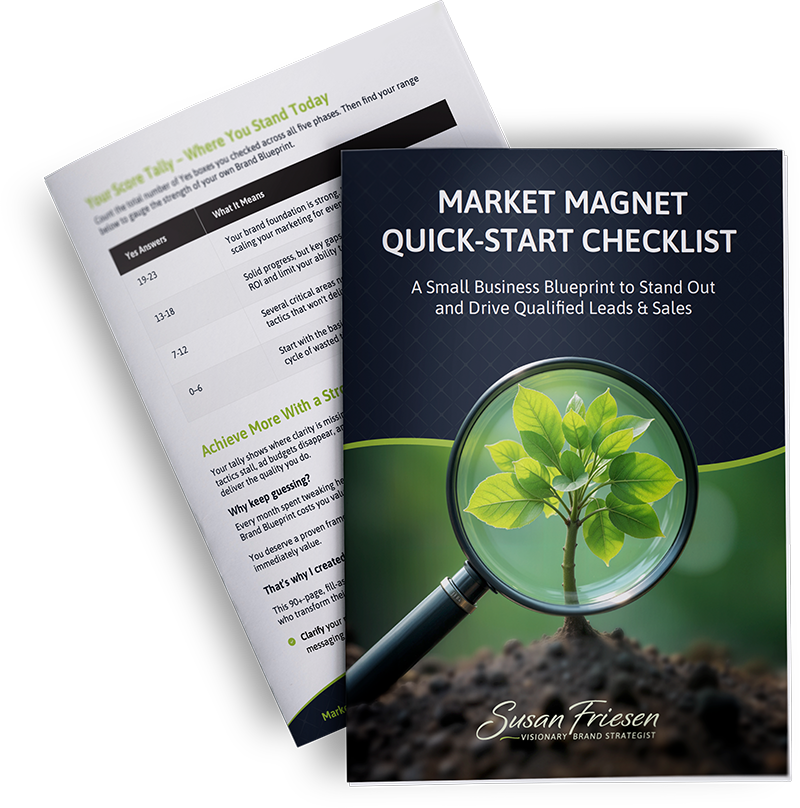
How well do you know your ideal client or your target audience?
In business, there are many ways to go about getting clients. We have the service-based business where we take on clients where we work with them one-on-one or in small groups, and we have the kind of business where we are selling a commodity.
Each kind of business takes a different sales approach. The first is often more relationship-based, and the second is often more product-based.
Service-based businesses
If you’re selling a service, how often do you, as a business owner, take work that isn’t a perfect fit?
The live client is there and in front of you – so yes! You’ll take the work.
But what if you only took work that was a perfect fit for you and your business? Do you even know what a perfect fit is for your business?
Understanding your ideal client is more than knowing their age, their demographic and where they hang out online.
It’s about knowing yourself and your business offerings.
What is it that you offer that’s unique to you?
Why would people want to hire you over anyone else?
Here are some questions to ask yourself that will help you get really clear on what your strengths are as a business and who you’re really after in an ideal client:
Analysis of Core Strengths:
- If a complete stranger were to come up to you and you had no idea their background or what their interests might be, what would you tell them that you did?
- What do you know you do better than almost anyone else you know?
- What is it that you love to do and would gladly do for free? No matter what?
- What’s your track record? What are your most favourite clients or projects and why?
Analysis of Ideal Client:
- Describe the last client who hired you. What was their:
- Gender
- Age
- Income bracket
- How did they hear about you?
- Now do a review of the clients who have hired you over the past year. Create a spreadsheet analysis of their commonalities.
- Rate, on a scale of 1-10, how much you enjoyed working with each one of them.
- What are you learning?
Product-based businesses
What if you’re selling a product?
It’s the latest, greatest thing to hit the travel community or the housewares department.
This involves a broader approach to your sales and still requires you really getting connected to why your ideal client (or target audience) would buy your product.
This can really help when designing PR campaigns to reach them.
What are your target audiences looking for?
Why might they buy the product?
What else can you do to cross-promote the product? E.g. If you are selling a travel accessory, writing articles and creating content that creates an experience for the reader would be a great way to promote your product.
But the catch is you need to know where they hang out, what they read, where they get their news, and what they like to do for fun.
Analysis of Your Product:
- Is your product a luxury or needs-based product?
- Is your product something that will be repeatedly purchased or is it likely a one-time only purchase?
- What need are you filling when people purchase this product?
- Can you create an experience around this product? i.e. is it just coffee that you’re selling or are you selling friendship and a relaxing moment in your day?
- When would people likely think of purchasing your product?
Analysis of Ideal Customer:
- Describe your ideal customer – why would they purchase your product?
- What do you know about your ideal customer?
- Gender
- Age
- Income bracket
- Where do they purchase your product?
- What’s the need you are filling when they purchase your product?
- What other things do your customers have in common? For example, if they are purchasing a travel-related product, what else might they purchase and where?
The more we know about your ideal customer or client the more we can use different marketing and communications techniques to reach them.
Here is a list of different ways that you can advertise to your ideal client or customer without them feeling like you’re selling to them:
- Blog articles
- News media stories that mention your product or establish a need for your product
- Speaking Engagements at events
- Client or customer contact events
- Referrals from previous customers or clients
- Social media posts
- Sponsorship of causes you care about
- Posting opinion pieces that raises your company’s profile
- Entering contests that promote your business
- Giving away product promotion pieces that have people remember you
The better you know your ideal client or your target audience, the more likely these PR tactics will reach them and turn into sales for you!







